The new Lexus UX 300e is not only our first battery-electric vehicle (BEV) but the first production model produced under the Lexus Electrified strategy.
Originally revealed at the 2019 Guangzhou International Automobile Exhibition, the UX 300e was given its European debut at the Kenshiki Forum in Amsterdam in January. The new BEV is scheduled to go on sale in China and selected European markets later this year and in the UK by 2021.
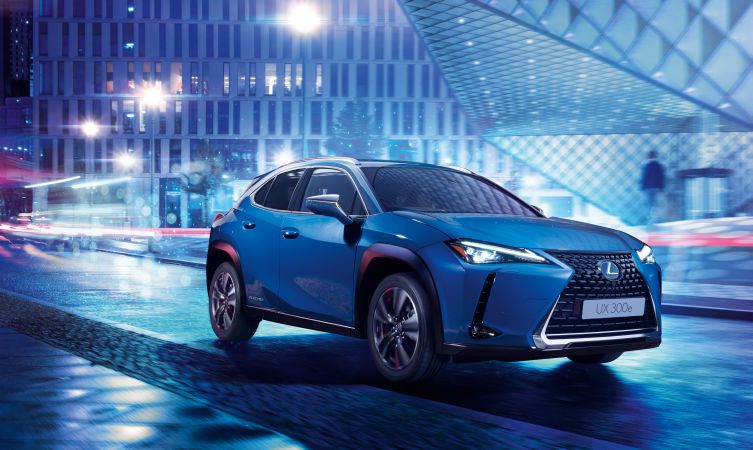
Lexus UX 300e: principal features
Developed for excellent on-road performance, our engineers have preserved the distinctive design and convenience features of the Lexus UX compact SUV. They also focused on the opportunities to build on the performance advantages that are unique to EVs, thereby holding true to our ‘yet’ philosophy.
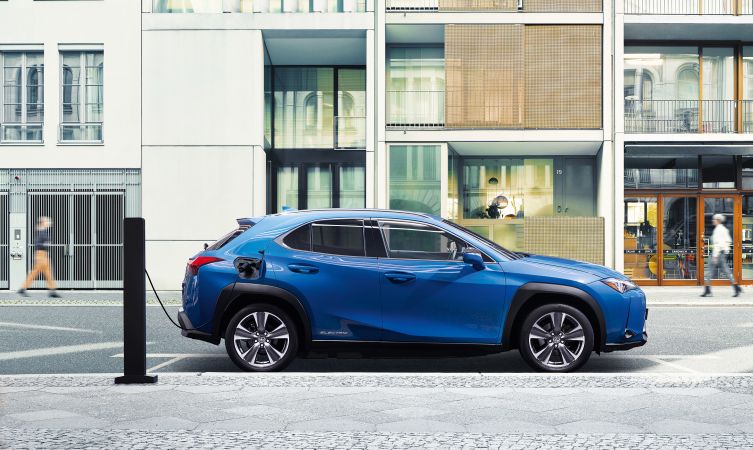
In these respects, the high-output, 150kW/300Nm motor of the new Lexus UX 300e provides natural yet brisk acceleration, the precise delivery of which can be modified through the Drive Mode Select function and four levels of deceleration and regeneration management.
The model’s high-capacity, 54.3kWh lithium-ion battery is located directly beneath the cabin floor to ensure a low centre gravity as well as optimum front/rear weight distribution. Similarly, the strategic application of additional bracing and special shock absorber tuning to match the dynamic nuances of an electric car, have served to enhance the car’s already high-performance GA-C platform.

While EVs are naturally quiet in operation, the UX 300e goes further by adding insulation to suppress noises that would otherwise be noticeable in the absence of an engine and transmission. Engineers also addressed the sound generated when the vehicle is driven. Active Sound Control is used to transmit natural, ambient sounds to communicate driving conditions to the vehicle’s occupants. Nevertheless, the UX 300e will offer one of the most tranquil cabin environments in its class.
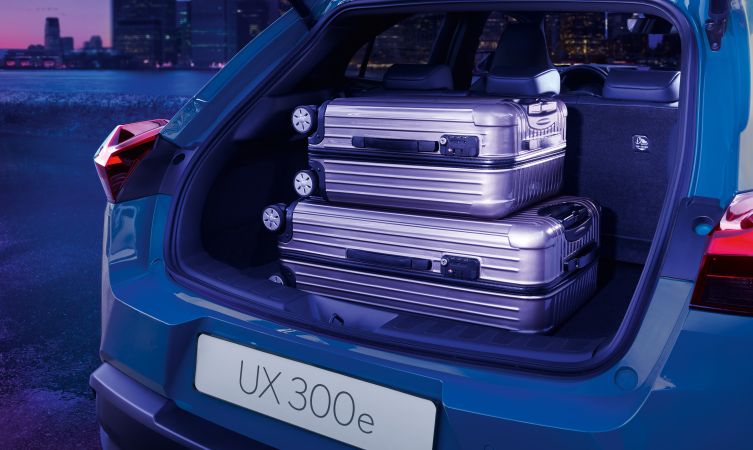
Lexus UX 300e: reliability and hybrid heritage
The knowledge we have gained from more than 15 years of industry-leading hybrid systems was applied in the development of the new Lexus UX 300e. This experience directly assisted us in maximising the efficiency of the motor, inverter, gears and high-capacity battery – in fact, the performance of the entire system – to deliver an anxiety-free driving range. The UX 300e achieves a range of 249 miles/400km in the correlated NEDC cycle, corresponding to a more than 186-mile/300km target range in the WLTP cycle.
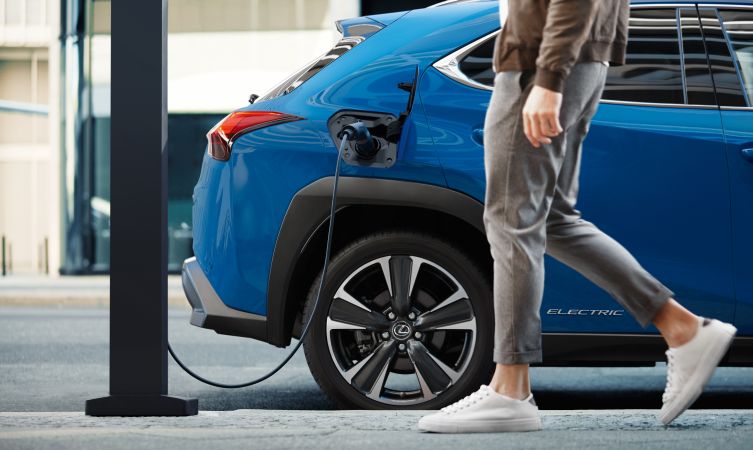
For example, the battery is equipped with a sensitive temperature management system, while further monitoring systems regulate charging and prevent issues related to over-charging. It should therefore deliver outstanding battery reliability.
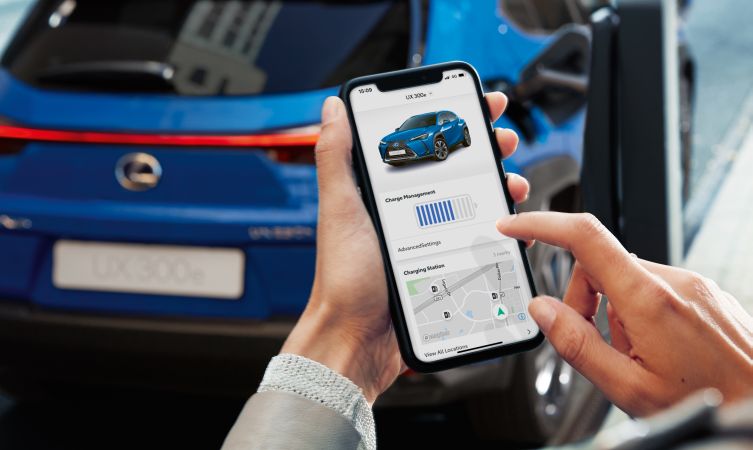
The engineering team has also adopted the latest connectivity technology to maximise the car’s everyday usability and functionality. By linking their smartphone with the Lexus Link+ app, UX 300e owners will be able to remotely check battery charge and driving range.
The app includes further controls, such as a timer to indicate when a full charge will be reached, and a charging schedule for when the vehicle is next expected to be driven or timed to commence when energy prices are low. It will also be possible to remotely tune the cabin climate before you jump in.
Distinctive design and high functionality
Lexus carried over the distinctive styling and high functionality of the UX compact SUV to the new UX 300e, developing new aerodynamic wheel designs and an underbody cover. Locating the shift-by-wire system on the centre console contributes to the simplicity and functionality of the interior.
True to Lexus’s prioritisation of new, advanced safety technologies and quickly making them available to customers, the UX 300e is equipped with Lexus Safety System+, helping in the prevention of accidents, injuries and fatalities. At the same time, the development of driver assistance systems helps reduce driver stress and promote a more natural and safe driving experience.
Technical specifications
| DIMENSIONS & WEIGHT | |
| Overall length (mm) | 4,495 |
| Overall width (mm) | 1,840 |
| Overall height (mm) | 1,545 |
| Wheelbase (mm) | 2,640 |
| Loadspace volume (rear seats upright, to luggage cover, l) | 367 |
| Loadspace volume (rear seats upright, to roof, l) | 486 |
| PERFORMANCE | |
| Battery capacity (kWh) | 54.3 |
| Cruising range – NEDC correlated (miles/km) | 249/400 |
| Cruising range – WLTP (miles/km – target) | 186/300 |
| System output (kW) | 150 |
| System torque (Nm) | 300 |
| 0-62mph acceleration (sec) | 7.5 |
| Max. speed (mph) | 99.5 |
| CHARGING | |
| Charging speed – AC (kW) | 6.6 |
| Charging speed – DC (kW) | 50 |
| Charging time – AC (hours) | 7* (200V/30A, estimated value) |
| Charging time – DC (0-80%, minutes) | 50* (max. 125A, estimated value) |
* Dependent on battery temperature, usage history, charging stand (charger) and operating voltage.
All information was correct at the time of publishing.
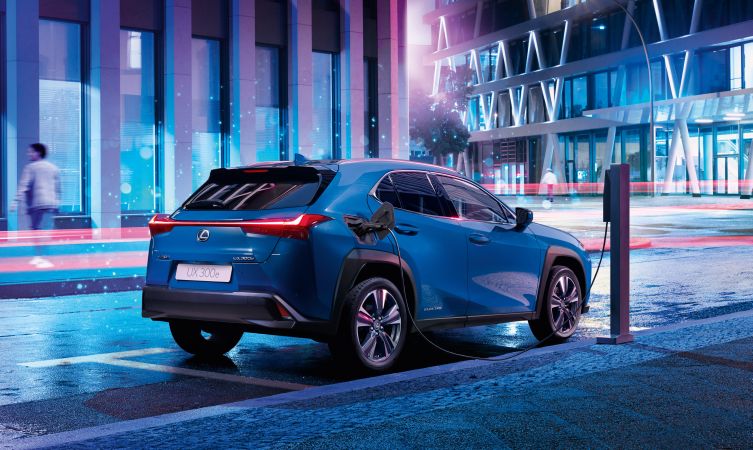


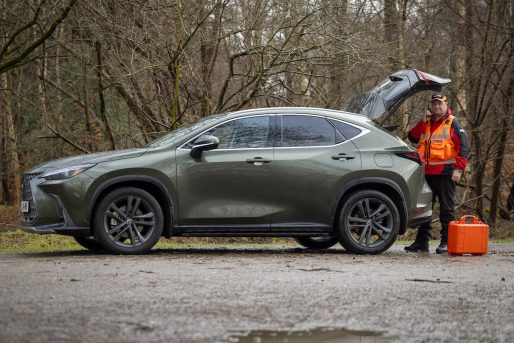
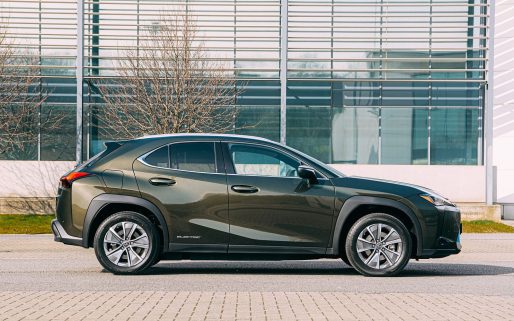
Would you be able to confirm what type of charging connection this car has please and what is the maximum KW/h it can take on a fast charge?
Hi Bryan,
Thanks for getting in touch with us and for your interest in the new UX 300e. The charging speed for DC from 0% to 80% is 50mins and is a max 15kW. The type of charging connection used is CHAdeMO for DC charging, and ‘Type 2’ (or Mennekes) for AC charging.
We hope this helps.
What is needed is a genuine 480km range vehicle – the battery in the UX 300e is quite simply too small
Hi Robert,
Thanks for your message. We’re sorry to hear you’re not a fan of the UX 300e. When determining the range, we looked for the optimal balance between usage, package and cost. The average BEV driver in Europe covers around 26 miles per day. This means that with the current range, he will be able to drive the vehicle for a full week without recharging.
Thanks.
Not everyone likes big cars. A small car with limited range would work for me. But must be versatile and fun to drive.
Hello there
I think you have provided an answer to the wrong Robert. The point you have responded to was raised by a Mr Robert Jenkins, not me. Just thought I’d let you know so you could re-direct the answer to the right Robert.
Hi Robert,
Thank you for making us aware of this, we will look into this further.
Thanks.
I don’t believe its about being a ‘fan’ of the car; I drive a Lexus and have the utmost respect for the brand quality and service. Whilst acknowledging your comment in terms of average drive, most households will take extended trips periodically that would require a charge en route. The state of the charging network in the UK is poor, until a Tesla like network is built buyers will look to the maximum range of their BEV, otherwise a second ICE car would need to be a consideration. If it were a straight choice of buying a Tesla or Lexus. Tesla wins on range and charging infrastructure hands down but build quality is shocking. To exploit the BEV sector surely stepping away from a city car would enhance the reputation of Lexus as a serious player in this area? As an aside, what are the results of DC rapid charging this battery in succession – does it suffer from ‘cold gate’ like the air cooled Leaf? And finally you have previously stated that CHAdeMO is widely available in Europe but it is really not the way forward as for example Ionity use the European CCS charging standard. My next car purchase will be BEV and would love it to be a Lexus but not sure this UX300e has enough all round capability for me; I’m sure it will work for some as a second car.
Hi John,
Thanks for getting in touch with us. Firstly, adding range and/or performance is technically not so difficult, but it would require some compromise on other elements such as price and package. We believe that with UX EV, we strike a competitive balance between package, range and performance, making the car an attractive option for more customers.
Regarding rapid battery charging, even though the battery is cooled, and therefore runs less risk of being damaged by the high temperatures, there is always some increased battery degradation from high-speed DC charging.
Finally, the reason is that we use CHAdeMO for DC charging, and ‘Type 2’ (or Mennekes) for AC charging, whereas some competitors use CCS (Combined Charging System) which uses the same connector for AC and DC charging (hence ‘combined’).
By splitting the two charge-ports, we have an advantage in terms of design (two smaller ports on either side of the vehicle rather than one big port). But we also save some weight, since a combined charger is heavier.
Thanks.
You are saying that a slightly small/lighter charge port is better than a charge port that you can actually use?
I want to make sure I am understanding you correctly…
Hello George,
By splitting the two charge-ports, there is an advantage in terms of design (two smaller ports on either side of the vehicle rather than one big port). As well as this, there is the advantage of saving some weight, since a combined charger is heavier. In addition, we will also offer both AC and DC chargers to our customers.
Thanks.
People don’t want a car that is incapable of doing a return trip outside the city. You quote a range of 186 miles. In real conditions that’s probably closer to 120 miles. Allowing for range anxiety, you wouldn’t want to travel more than 80 miles. That’s not enough to visit my father’s house (90 miles) without stressing that the battery might run out.
Hi Chatmandu,
Thanks for getting in touch and sharing your thoughts with us. We are sorry you don’t think the UX 300e will suit you at this time. This is just our first BEV and we hope one day to offer another that would fit with your requirements in the future.
Thanks.
It is great that you are going to offer fully electric and they are sure to be super cars. I think the real breakthrough though will be the adoption of hydrogen powered cars with fuel cells. With the recent advances hydrogen fuel tanks this must now be a viable option. We just the need the infrastructure with hydrogen being produced next to renewable energy sources to reduce wasting energy by moving it around the grid. Your development in electric cars will not be wasted. Hopefully one day someone will make the hydrogen fuel tanks the same shape as the batteries so that some of the electric cars can be converted.
Hi Andy,
Thanks for getting in touch. It’s great to hear your interest in hydrogen fuel cell cars. Toyota Motor Corporation (parent company of Lexus) launched its fuel cell research and development programme back in 1992 and launched its first hydrogen fuel cell vehicle in 2015. While there isn’t currently a Lexus FCV, we do have an underlining commitment to have a hydrogen fuel cell car in our range and you can find out more about this using the links below:
https://mag.lexus.co.uk/fuel-cell-hybrid-technology-nears-production/
https://mag.lexus.co.uk/lexus-lf-fc-pictures/
https://mag.lexus.co.uk/fuel-cell-technology-use/
Thanks.
What is the point of this? EVs are necessary for environmental matters, ie to stop fossil fuel emissions. Yet you power the battery with petrol! Why not at least have a plug in option?
Hi J A Chater,
Thanks for getting in touch. The Lexus UX 300e is actually our first battery electric vehicle. While the design and convenience features of our hybrid UX are still there, our team also focused on the opportunities to build on the performance advantages that are unique to EVs.
We look forward to releasing more alternatively fuelled vehicles in the future under our Lexus Electrified strategy.
Thanks.
Hello, I would like to ask (if it is not a secret) if you could tell me if you do not know who is the supplier of the drive electronics for the new Lexus UX300e. I am very interested in this car.
Thank you very much
Hi Tomáš,
Thanks for your interest. It is not a secret, but it is difficult to say. We have a number of suppliers, as well as producing some equipment ourselves. Please contact Lexus in your region for further information.
Thanks
Thanks one more time.
And what about electric motor? Can you tell me the name of the supplier? 🙂
Hi Tomas,
Thanks for getting back in touch and apologies for our delayed response. We can’t give you a name, but the electric motor is produced by a company within The Toyota Group.
Thanks.
I need to replace my fantastic 12-year-old RX400h with another 4WD. I’m disappoited to see this UX300e is front-wheel drive only. I’m surprised that it will come with chademo, which I have got used to with my Leaf. Even Nissan are now switching to CCS. Will V2G be possible with the UX300e?
Hi there,
Thanks for getting in touch.
The UX300e uses CHAdeMO for DC charging, which is done in 50 minutes at a maximum speed of 50kW. Splitting the two charge ports provides a design advantage by having two smaller ports on either side of the vehicle as opposed to one larger port. This also provides a weight reduction as a combined charging port is heavier.
Regarding V2G technology, we have no information on this currently.
Thanks.
I am also very interested in the UX300E but will not buy it because of the limited range. Why not offer it with a larger range battery as an option?
Hello Christopher,
Thank you for your feedback.
We have passed this onto our wider product team.
Thanks.
Hello I have just purchased a ux300e the situation with Chad emo chargers on the uk motorway is very poor only one outlet per station compared with 6 ccs. You also have the situation in the uk that Chad Emo chargers are being phased out, so what happens then?
What you stated about weight and the combined charging ports on the car is rubbish
You need to address the charging problem now
Peter
Hello Peter,
Thank you for your feedback.
We are always looking for ways to improve our product range, so we will pass this feedback onto our Wider Product Team.
Thanks.
Wow. Has the situation changed or improved?
I am not sure how one charging port can actually be lighter than two. Maybe we could get some more details on the weight saving?
Hello George, thanks for your question.
Our Technical Team have advised that the charge cable handled by the customer is lighter.
Thanks.
Hi,
I bought a 2023 UX300e which still has a Chademo DC charging port even though in Europe the standard was changed to CCS in 2022 with Chademo being phased out, so why has Lexus not changed to CCS or as part of the sale include a CCS to ChaDemo converter
Hello Dipesh,
Thanks for your comment.
To assist you further with this, please may we take your vehicle registration?
Thank you.